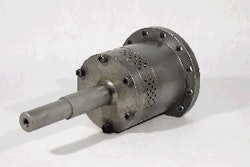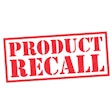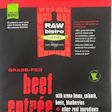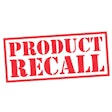Robotic palletizing systems have been coming on strong for several years in the petfood industry. Today they are used to palletize a wide range of products in many types of packaging. This includes bags, cases and rigid plastic containers. Often, these systems can handle multiple production lines running different packages simultaneously. Robotic palletizing systems offer numerous advantages over conventional palletizing equipment:
Robot integrators fit robotic systems into production systems. They provide, and often manufacture, conveyors, robot infeed systems and control systems. Make sure you choose your integrator carefully.
Reliability
Robots are well proven in the most demanding applications. They were developed for the automotive industry where they had to provide unparalleled reliability, because downtime in the auto industry can be extremely expensive. Now, most reliable robot manufacturers provide equipment that lasts up to 25 years.
Userfriendly software
User-friendly software is critically important for a company venturing into robotics for the first time. One needs to carefully evaluate the petfood plant's normal production staff and decide if the existing staff can be trained to run the system. Not all robots are alike, so it is best to choose a major robot manufacturer and integrator who can demonstrate the user friendliness of the system.
Reduced staffing
Robot systems are usually designed to run at floor level. Gone are the days of operators stuck all day on high-level platforms. The trained robot attendant can often perform numerous other functions in the line while keeping an eye on the robotic system. This can significantly reduce labor costs.
Bag production lines
Single package tooling: For bagged product production lines running up to 20 bags per minute, robotic systems typically use a clam shell style end-of-arm tool. This style tooling allows for fast robot moves. However, some users complain that the three second pick, place, return cycle is too fast and results in the need to drop or sometimes throw the bags in order to achieve the required production rate. This can lead to decreased pallet stack quality.
Multiple package tooling: Often robotic systems are designed to pick and place multiple packages each cycle. Some robotic system suppliers are using layer-forming techniques in order to be able to pick multiple bags at a time. This allows the robot to both move more slowly and increases the number of packages per minute palletized. Bags are placed gently, not dropped, resulting in more uniform pallet loads.
For example, a three-bag pick, place, return cycle can run with three times the cycle time of a single-bag-pick system. This is a 9-sec. cycle for 20 bags per minute or a 6-sec. cycle time for 30 bags per minute. The tooling is normally vacuum, but sometimes a clamp-style tool can be used.
Full-layer tooling: Full-layer robotic systems have the most gentle cycle and allow for the highest production rates. These systems offer speeds of 40-60 bags per minute (up to seven layers per minute on some products). Often standard layer-forming techniques are used. However, new, more efficient systems are being introduced to improve the standard methods. These are systems that offer two robots working simultaneously to palletize at high rates. They have a layer-forming robot working to make the layers and a full-layer palletizing robot to palletize the loads, apply top sheets and sometimes even pick and place the pallets. These systems often run 30-60 bags per minute and offer programmable (automatic) changeover from a touch screen.
Flexible and versatile
The flexibility and versatility of properly integrated robotic palletizing systems allow for simultaneous handling of multiple lines running different products. This dramatically reduces floor space requirements by replacing multiple high-level palletizing machines with one robotic system at floor level.
Some petfood manufacturers are supplying petfood in 1-5 gallon plastic tubs. For this packaging, robotic systems offer better flexibility, reduced floor space and lower maintenance costs vs. conventional equipment.
Buyer beware
Robot integrators vary over a wide rangefrom small to large and from inexperienced to world-class. It is usually best to choose an integrator whose main business is robotic palletizing. The companies that have gotten into robots as a sideline are not your best choice. Try to select an integrator who has been in the robotic palletizing business for 10 years or more.
The integrator should have dozens of systems in the field. Also, the integrator should be able to demonstrate his competency in tooling, programming and peripheral equipment.
Preferably the integrator should manufacture everything except the robot, including the conveyors, robot infeed systems and the control systems. In addition, make sure the integrator has the depth of resources to support your project now and in the future.
















